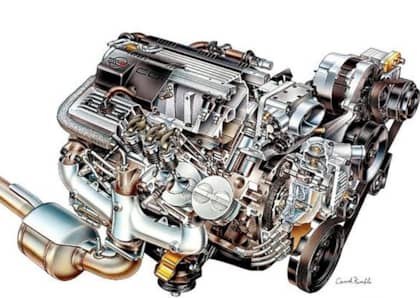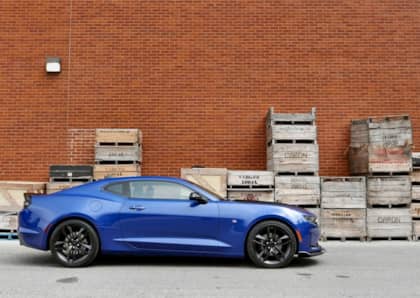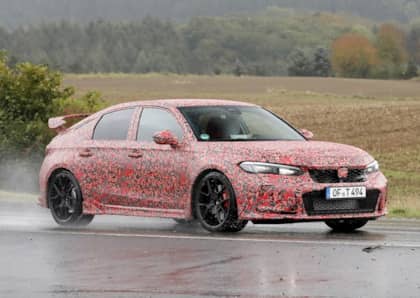GM's Unkillable Iron Duke 4-Cylinder Engine Powered Dozens Of Trucks, Cars, and SUVs For Decades
Not every unkillable engine out there is universally celebrated. Some designs force us to ask the uncomfortable question of whether it's worth owning a motor that will run forever if that means enduring lackluster performance for hundreds of thousands of miles.

Specifically, this is the dilemma posed by the Iron Duke, the ultra low-tech four-cylinder engine adopted by millions of General Motors cars and trucks starting in the late 1970s. Intended to offer miserly fuel mileage for buyers still shell-shocked by back-to-back energy crises, the Iron Duke provided sub-100 horsepower drudgery in a package that steadfastly refused to push the engineering envelope.

A huge success or a terrible failure, depending on your perspective, the Iron Duke defined much of the decade for GM, and along the way, provided a surprising final chapter for Pontiac's illustrious Super Duty family of racing engines.
Lowered Expectations
The Iron Duke, which was built by Pontiac for as many as 30 other vehicles produced by GM's dizzying array of brands, brought things back to basics. Pontiac had been looking at a smaller, more efficient engine since at least the early 1970s, and after witnessing the Malaise Era struggle with choked V8s and the various issues that plagued the Chevrolet Vega's 'advanced' aluminum block, the overhead camshaft four-cylinder, a clean-slate, simple approach was deemed to be best.

Pontiac's engineers came up with a brand new design that encompassed lessons learned from what was currently available from the GM stable at that time. Priorities were smooth operation (not always a given with a four-cylinder at that time), exceptional reliability (which meant no experimental technologies), and fuel-sipping at all speeds.

The company identified a Brazilian General Motors engine (based on the decades-old Chevy II motor) as offering a good, vibration-free template (without the need for a balance shaft) for its own straight 4-cylinder, and it borrowed its 2.5L displacement and its 3.00 inch and 4.00 inch bores. The rest was all Pontiac, with a unique intake, heads, internals, and even exhaust tagging in to produce a dead-simple pushrod four-cylinder that was good for just under 90hp and 128 lb-ft of torque with a two-barrel carburetor. That output arrived at respectably low RPM for such a small motor, with torque peaking at less than 3,000 rpm.
Modest Beginnings
Dubbed the 'Iron Duke' as part of a marketing effort to differentiate the 2.5L motor from the (very) unsuccessful 2.3L Vega unit, Pontiac installed the engine in its largely forgotten trio of the Sunbird, the Ventura, and the Astre in 1977. These three autos held up the bulk of the brand's entry-level line-up, so straight line speed and passing power weren't nearly as important as being able to 'pass' a gas station on the way to work in the morning while avoiding long lines for fuel.

The early Pontiac deployment easily convinced General Motors that the Iron Duke engine was a winning strategy that could be expanded across other brands. Chevrolet would be the next to benefit from the 2.5L four-cylinder under the hood of the Monza, followed closely by its Oldsmobile platform-mate.

Several key redesigns were in the cards for the engine just after its first couple of years on the market. New cylinder heads and numerous internal tweaks arrived in 1979, and by 1980 it was popping up in front-wheel drive cars like the ill-fated Chevrolet Citation and its X-body brethren. For the 1982 model year throttle body fuel injection was on the menu, and while Pontiac tried to pass off this version of the motor as the 'Tech IV,' the Iron Duke moniker stuck around for good.
Pulling A (Slow) Fast One
By now the 2.5-liter had made its way into not just GM products but also Jeep (The CJ-5 and CJ-8) and AMC (the Spirit, the Eagle, and the Concord) vehicles. 1982 proved to be the most polarizing year for the Iron Duke as buyers of the redesigned third-generation Chevrolet Camaro could save a few bucks by going with the anemic four-cylinder as the base motor. Its wheezy attitude with the pedal down was in stark contrast to the sultry, aerodynamic looks of the new muscle car.

A similar backlash against the Duke would emerge in 1984 when it appeared on the menu for buyers of the Pontiac Fiero. Despite a compression bump and a new crankshaft, this version of the four-cylinder had all of the same low-revving characteristics that had made the 2.5-liter a great fuel saver, but in the context of what was marketed as a fun, mid-engine sports car it was clearly lacking.

There was also a quality issue with early versions of the Pontiac Fiero engine blamed on a poor run of connecting rods that failed catastrophically, knocking a hole in the side of the engine block so that oil could spray on the exhaust system and then burst into flames.

In 1987, GM attempted a makeover for the Iron Duke that included yet another head redesign, the elimination of the distributor, and the following year, a balance shaft and a revised rotating assembly. This would peak the Pontiac engine's power at 110 horses, where it would stay until the end of its production run in 1992 (with some Grumman mail trucks built with the Iron Duke until the middle of the decade).
Going Out With A Bang
The weirdest coda to the Iron Duke saga came in the form of a racing engine from Pontiac's Super Duty division. The same shop responsible for some of the mightiest drag cars of the 1960s (and the 455 Super Duty from the Pontiac Trans Am) built a version of the motor for use in IMSA GT and low-level NASCAR competition.

Although streetable 2.5L motors were limited to 150hp builds, slightly larger Iron Duke blocks produced well over 230 horsepower without sacrificing any of its famed dependability (with similar modifications made to the Indy 500 Pace Car edition of the Fiero that gave it nearly 170 horsepower.

These unkillable Super Duty Iron Dukes benefited from stronger blocks, larger rod journals, and much better heads to generate their power. Some aftermarket racing teams continue to produce the Pontiac design to this day, typically for powerboat racing, but also to provide the diehard Fiero (and occasional Camaro) owners out there with access to very expensive, high-quality aftermarket parts











